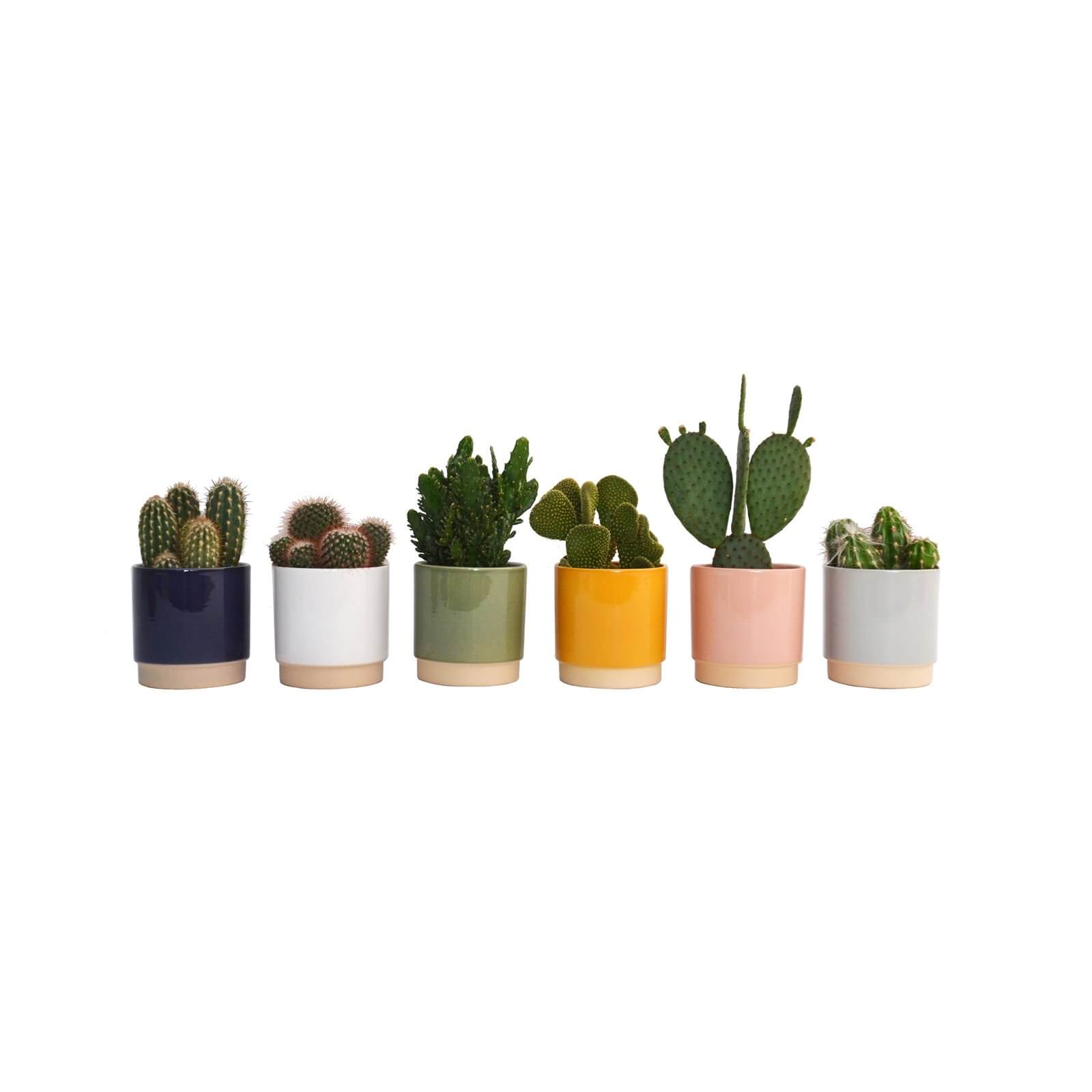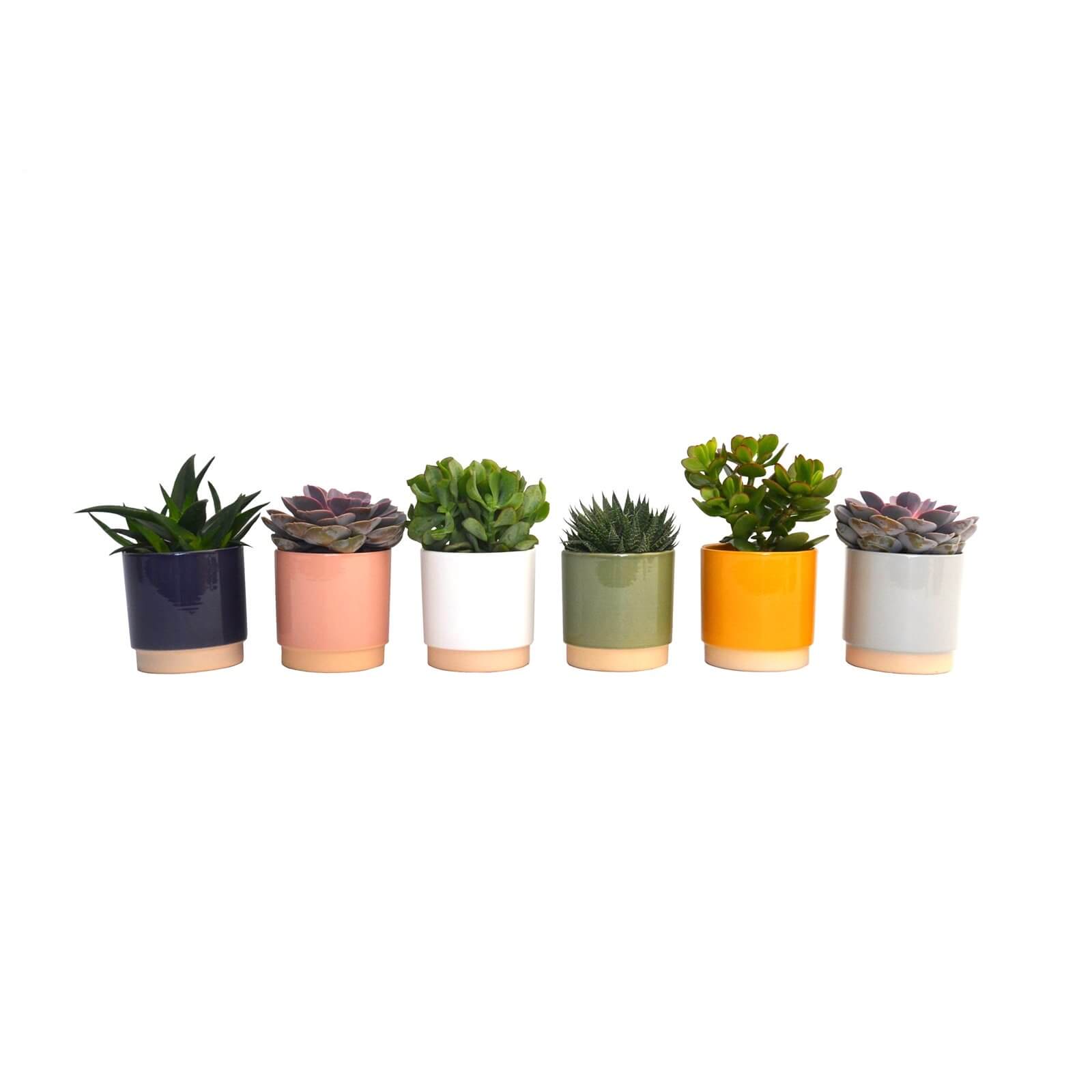Sorry, this product is currently unavailable. Add to your wishlist to receive an email notification when available for delivery.
Image 1 of 2
Product Information
This medium size Cacti is well performing with fantastic varieties in combination with trendy stylish ceramics.
Brand
None
Additional Information
While Cacti are native to arid regions and generally thrive in poor soils, it does not mean one should not water them or provide nutrients. How often should you water? There is no answer that is universally correct. There is a direct relationship between water, light, temperature, soil conditions and humidity. The higher the light level and temperature and the less humid the more often watering is required.
Product Dimensions (H)x(W)x(D)
Height 25-32cm and width 10-14cm
Product Contains
Ceramics
Latin Name
Cactus cultivars
Material
Plant
Pot Dimensions (H)x(W)x(D)
13cm
Safety Information
Caution - skin and eye irritant/toxic if eaten
Scent
Unscented
Soil Type
Most commercial potting soils are too rich in fresh organic matter for these plants. The most important factor in choosing a planting medium is that it allows food, water and air to get to the roots and is porous enough to let water drain through. Many growers use a mix of a low peat planter mix and pumice (50/50). Sand, small pebbles and vermiculite are ingredients added by many successful growers and hobbyists. Experiment with different combinations to discover the right combination for your conditions.
Moisture
Water when the top few cms of soil becomes dry. Reduce watering in the winter.
Delivery
Delivery costs will be calculated at checkout for your order.
Smaller items - £6
Larger items (may require two people to deliver) - £20
Bulkier/heavy items (e.g. Kitchens & Bathroom suites) - £30
Please note postcode exclusions apply.
If ordering multiple items, we’ll only charge you once based on the largest item ordered.
Some products may be delivered from the supplier. On selected large/bulky products our customer service team, or in some cases our suppliers, will contact you to arrange a delivery date.
View full delivery details.
Click & Collect
Click & Collect is usually available at your local store in 1 hour. Items will be held for 5 days.
Returns & Refunds
We'll happily refund you for any items you return to us in an unused and resaleable condition, within 30 days of receipt. Exclusions apply. View our Returns & Refunds policy.
Delivery costs will be calculated at checkout for your order.
Smaller items - £6
Larger items (may require two people to deliver) - £20
Bulkier/heavy items (e.g. Kitchens & Bathroom suites) - £30
Please note postcode exclusions apply.
If ordering multiple items, we’ll only charge you once based on the largest item ordered.
Some products may be delivered from the supplier. On selected large/bulky products our customer service team, or in some cases our suppliers, will contact you to arrange a delivery date.
View full delivery details.
Click & Collect
Click & Collect is usually available at your local store in 1 hour. Items will be held for 5 days.
Returns & Refunds
We'll happily refund you for any items you return to us in an unused and resaleable condition, within 30 days of receipt. Exclusions apply. View our Returns & Refunds policy.
Cactus mix in Eno Duo pot 13cm
SKU: 552556
CLEARANCE
Was: £11.95
£5.98Save: £5.97Delivery is not available
Not available in stores
15% off with code SAVE15. Simply enter the code in the basket to apply the discount.
Product Information
This medium size Cacti is well performing with fantastic varieties in combination with trendy stylish ceramics.
Brand
None
Additional Information
While Cacti are native to arid regions and generally thrive in poor soils, it does not mean one should not water them or provide nutrients. How often should you water? There is no answer that is universally correct. There is a direct relationship between water, light, temperature, soil conditions and humidity. The higher the light level and temperature and the less humid the more often watering is required.
Product Dimensions (H)x(W)x(D)
Height 25-32cm and width 10-14cm
Product Contains
Ceramics
Latin Name
Cactus cultivars
Material
Plant
Pot Dimensions (H)x(W)x(D)
13cm
Safety Information
Caution - skin and eye irritant/toxic if eaten
Scent
Unscented
Soil Type
Most commercial potting soils are too rich in fresh organic matter for these plants. The most important factor in choosing a planting medium is that it allows food, water and air to get to the roots and is porous enough to let water drain through. Many growers use a mix of a low peat planter mix and pumice (50/50). Sand, small pebbles and vermiculite are ingredients added by many successful growers and hobbyists. Experiment with different combinations to discover the right combination for your conditions.
Moisture
Water when the top few cms of soil becomes dry. Reduce watering in the winter.
Delivery
Delivery costs will be calculated at checkout for your order.
Smaller items - £6
Larger items (may require two people to deliver) - £20
Bulkier/heavy items (e.g. Kitchens & Bathroom suites) - £30
Please note postcode exclusions apply.
If ordering multiple items, we’ll only charge you once based on the largest item ordered.
Some products may be delivered from the supplier. On selected large/bulky products our customer service team, or in some cases our suppliers, will contact you to arrange a delivery date.
View full delivery details.
Click & Collect
Click & Collect is usually available at your local store in 1 hour. Items will be held for 5 days.
Returns & Refunds
We'll happily refund you for any items you return to us in an unused and resaleable condition, within 30 days of receipt. Exclusions apply. View our Returns & Refunds policy.
Delivery costs will be calculated at checkout for your order.
Smaller items - £6
Larger items (may require two people to deliver) - £20
Bulkier/heavy items (e.g. Kitchens & Bathroom suites) - £30
Please note postcode exclusions apply.
If ordering multiple items, we’ll only charge you once based on the largest item ordered.
Some products may be delivered from the supplier. On selected large/bulky products our customer service team, or in some cases our suppliers, will contact you to arrange a delivery date.
View full delivery details.
Click & Collect
Click & Collect is usually available at your local store in 1 hour. Items will be held for 5 days.
Returns & Refunds
We'll happily refund you for any items you return to us in an unused and resaleable condition, within 30 days of receipt. Exclusions apply. View our Returns & Refunds policy.

